I am looking for a Pascals triangle using python script
I have done till here and have no idea how to add on
numstr= raw_input("please enter the height:")
height = int( )
tri = []
row1 = [1]
row2 = [1, 1]
tri.append(row1)
tri.append(row2)
while len(tri) < height:
